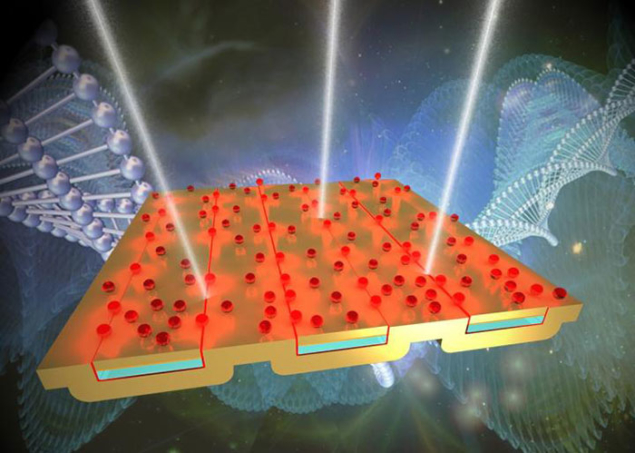(Nanoelectronics _ Plasmonic) Non-diffuse excitation of nano-conduction band electrons
Researcher and author: Dr. ( Afshin Rashid)
Note: The interaction of a particle of size d with electromagnetic waves with excitation wavelength λ can be studied in various analytical, semi-analytical and numerical methods. Of course, in these analyzes, it is always assumed that d≪λ, that is, the particle size is much smaller than the wavelength. The coordinated oscillation phase of an electromagnetic field at a particle volume is assumed to be constant.
Of course, it is important to note that by moving away from the surface of the metal nanoparticle, the intensity of the electromagnetic field (specifically the intensity of the electric field) decreases exponentially. In this nanoparticle, the generated electromagnetic field is localized, compressed and improved. The slight changes in the dielectric around the nanoparticle affect the amplification of the surface plasmons, so that these changes manifest themselves in the amount of scattered beam, the absorbed beam, or the change in its wavelength. These changes can be measured using optical characteristics. The oscillations of surface electrons and the electric field around them indicate the intensification of localized surface plasmons.The name polariton was used for quasi-particles that were half-matter and half-photon, which is the coupled state between an elementary excitation beam photon and metal conduction electrons, and the term Plasmon Polariton to express the cause of a coupling between a photon and Is a plasmon.
Surface Plasmon Polariton is the non-diffuse excitation of conduction electrons of metal nanostructures to which an electromagnetic field is coupled. Plasmonic waves are generated using the scattering problem of a conducting nanoparticle whose dimensions are below the wavelength of a high-excitation electromagnetic field.
The interaction of a particle of size d with electromagnetic waves with excitation wavelength λ can be investigated in various analytical, semi-analytical and numerical methods. Of course, in these analyzes, it is always assumed that d≪λ, that is, the particle size is much smaller than the wavelength. The coordinated oscillation phase of an electromagnetic field at a particle volume is assumed to be constant.
Researcher and author: Dr. ( Afshin Rashid)
PhD in Nano-Microelectronics





